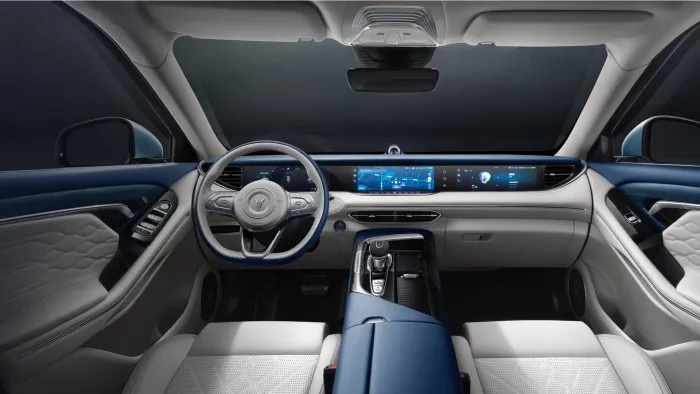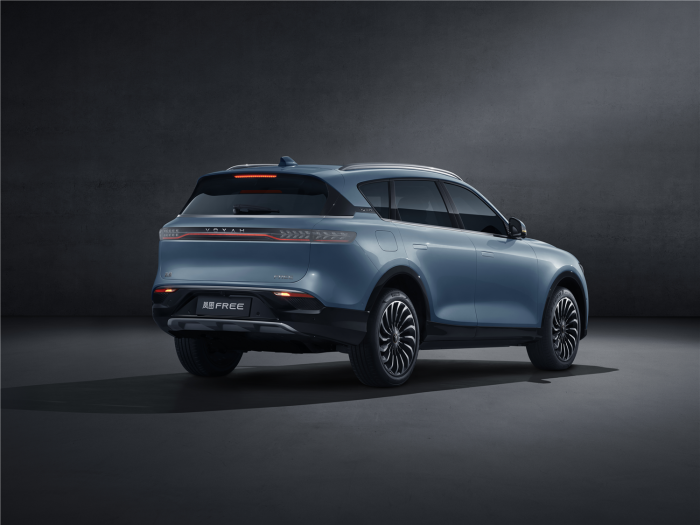*Author: Wang Xuan
On March 31st, the price of the Voyah FREE was officially announced, ranging from RMB 313,600 to RMB 333,600. Judging from its power form and the positioning in the mid-to-large-sized SUV market, the direct competitors of Voyah FREE will be the two new players in the car industry, Li Auto and NIO. As a latecomer in the market, Voyah can learn from the experience of the former.
After comparing the Voyah FREE with the Li ONE and NIO ES6 in detail, we can clearly see that these three car companies have vastly different product concepts.
To sum up, Voyah FREE is configuration-oriented, Li ONE is positioning-oriented, and NIO ES6 is user-oriented.
Since the launch of Voyah FREE, people have been summarizing and classifying its advantages and disadvantages compared to its competitors, but I think that for a product, the analysis without in-depth experience is not as good as returning the right of speech to the user. So let’s see how owners of Li Auto, NIO, and potential Voyah owners view Voyah FREE.
Configuration vs. Positioning
Li Auto User Jamie
I have been keeping an eye on Voyah cars. After reading about Voyah FREE’s configuration, I think many of the configurations are benchmarked against Li ONE. It’s like the product manager of Voyah is lurking in the Li Auto owners’ group. Because the extra configurations of Voyah FREE compared to Li ONE are exactly what many Li Auto owners have been wanting, such as Sentinel mode, air suspension, and double-wishbone suspension.
But I am not sure who exactly Voyah FREE’s target audience is. The positioning of Li ONE as a “daddy’s car” is very clear. Therefore, the configurations of large space, six-seat layout, heated steering wheel, and heated rear seats are all based on this positioning. In contrast, Voyah FREE is equipped with air suspension, 4.5s acceleration, and an integrated lift-up and lift-down three-screen display. These configurations indeed make it look more upscale, but the target audience is relatively vague.
Li ONE has only one configuration, which is not confusing for users when buying a car, but it is not friendly to those who wish to obtain higher configurations.I have an example to prove this point. Recently, the Ideal ONE pushed an OTA update to its users to add an energy-saving mode. However, I found that the NVH of the car deteriorated when using this mode, and many users in our community have also reported this issue. Some users even said they would rather consume more fuel per 100 kilometers to get better NVH. This indicates that the Ideal ONE, priced at 328,000 yuan, is already in the range of mid-to-high-end SUVs, and many users have demand for comfort and luxury features.
Currently, the Ideal ONE is the only product in the field of range-extended electric vehicles, and its target users are very clear. Therefore, I think that the BYD Tang FREE, when entering the market, can compete with the Ideal ONE passively rather than engaging in direct confrontation.
I have chosen the Tang FREE range-extended version. I have been paying attention to the BYD Tang brand since its establishment. Although the positioning of the Tang FREE is not clear, what attracts me the most is its cost-effectiveness. Moreover, I have gained a preliminary understanding of its safety performance during the activity of releasing its bare car body. At the same time, I also value the capability of its three-electric system.
However, I am still observing at this stage, and whether to buy this car still depends on the test drive. If the Tang FREE does not meet my expectations, I don’t think I will choose the Ideal ONE either. I may choose NIO ES6 or Volkswagen ID4 instead. Because I feel that the positioning of Ideal ONE does not meet my needs. My car-buying philosophy is to choose the product with the highest cost-effectiveness within my needs.Editor’s opinion: Ideals and NIO have many similarities in their approaches and positioning, which can be seen from the product configurations. Ideals are positioned as “Daddy’s Car,” and all its configurations are extended from this positioning. Therefore, Ideals do not need to provide optional configurations. As long as users approve of my positioning, all the configurations on the car will certainly be what the car owners need. NIO positions itself as a user-oriented company, providing users with high flexibility in configuration choices, which is also in line with its positioning. On the other hand, although the Voyah FREE has made luxury packages available, it still bundles several configurations to users, which is not too different from the luxury and luxury versions of traditional cars, but it has a higher degree of product power synthesis.
The Voyah FREE, which stacks high-end configurations, may not be visible to some users in its market force, and it seems to follow the product logic of traditional car companies. However, its comprehensive product power is higher.
The positioning of Ideals ONE is deeply rooted in the minds of consumers, making it easy to capture potential users. However, the proportion of dads in the consumer group is still small, so there is still a lot of room for growth for the Voyah FREE in the extended range electric vehicle market.
Traditional Car Companies’ “New Strength” vs. Internet Car Companies’ “New Strength”

- The first car owner of Ideals ONE in Hebei province
I think the intelligent transformation of modern cars is already an irreversible trend, just like when Nokia was killed by the iPhone. What impresses me most about the Ideals ONE is Ideals’ car-making philosophy and its market entry point, both of which are decisions made by Li Xiang. Li Xiang is a product manager himself, and he has a very accurate analysis of the customer and the positioning of his own product.
So when this car came out, many Ideal car owners saw it and thought that this was the car they wanted, and all the product features were satisfactory. Of course, it also has some flaws, such as the stability of the chassis and the grip of the tires when turning, but in my opinion, these are minor flaws. This product is still very close to customer expectations.
Li Xiang is also a person with internet genes, and his understanding of intelligence will be more thorough. The Voyah entered the new energy vehicle market with a background of traditional car companies, and in my opinion, the lack of an Internet gene makes it difficult for the Voyah FREE to surpass Ideals, NIO, and XPeng in terms of vehicle and subsequent iteration.
Some time ago, I also paid attention to Gaohe’s product, which cost more than 800,000 yuan. That car looks great everywhere, but the performance of the car’s console did not meet my expectations. After all, I haven’t test driven the Voyah FREE yet, so I can’t draw conclusions about many things, but I can also infer the disadvantages of the Voyah from some of the examples above.

- Owners of BMW X5 and Mercedes-Benz E300
- Prospective buyers of Voyah PHEV
- Global testers for Voyah
As a user of traditional luxury brands, my perspective on a car is also very traditional. Handling and power are the two highest priorities during the car selection process for me. The level of intelligence and user service of the car come in second. I participated in the test drive of the Voyah in Hainan, although I drove a Voyah FREE prototype, the driving experience of that car was very good, and the feeling of the chassis was very similar to that of BMW.
I am also concerned that the lack of Internet genes will become a disadvantage for Voyah. I can accept that there are no fancy functions in the infotainment system, and I can also accept the low-frequency OTA software updates from car companies. However, the core functions of this car must be easy to use and the operation logic must be clear.
For example, the current trend is a car system without physical buttons, so core functions like voice control must be easy to use, otherwise it will really affect the driving experience.


- Owner of the 846th NIO ES8 globally
I am one of the first NIO users. After attending the first NIO day in Wukesong, I was deeply attracted by Li Bin’s philosophy and the product power of ES8. In fact, when I bought the NIO ES8, I was prepared for trial and error. In the process of using the car, there were indeed some problems, such as workmanship issues, high power consumption of the first-generation motor, and the speech control system of the infotainment system was not easy to use.
However, if you ask me, whether I will consider buying the new version of ES8 in the future, I think I will, but after this experience, my trust in newly established car companies has been somewhat reduced. However, this incident is only for internet car-making companies. Now, the Voyah FREE has Dongfeng’s endorsement, so I am still quite confident about the completeness of the product.
I think the advantage of Voyah lies in two points, one is the high cost-effectiveness of the product, and secondly, Voyah FREE has both a PHEV version and a pure electric version, which has a larger market space. The biggest advantage of NIO is user service. Truth be told, I think that Voyah, which is fighting on two fronts, may not have enough energy to compete with NIO on service levels.
Editor’s Opinion: When planning this article, I was thinking about a question, which is that we, unconsciously, bring some industry-related things when we look at a product, which hinders our judgment.
After all, the real consumer group is pyramid-shaped, and industry-savvy consumers are just the pinnacle of the pyramid. Consumer demands are always diverse, and the ways of looking at problems are also different. The Voyah is a good example. For consumers who are very concerned about the new car industry trends, Dongfeng is a burden, but for traditional consumers, Dongfeng is a kind of guarantee.
If there is no fresh blood from the Internet to join the Voyah team, the drawbacks will be reflected clearly in software iteration. However, the advantage of traditional car companies at this stage is that their users will be free from the risk of trial and error.
In the traditional concept of car companies, a car only needs to be offline to ensure that it is reliable enough. There is no situation where product loopholes are patched later through OTA to make a big deal small or small.
Of course, the rise of new car manufacturing also proves that the head of a car company has a great impact on his product. The leaders of Ideals, NIO, and XPeng have a high reputation in the Internet industry, and they are working for themselves, so they dare to step forward and cheer for their products, infecting more consumers to consume their products.

Conclusion
Rigid demand is the key factor that affects consumers’ car choices, and the corresponding feature and positioning of a product make up this rigid demand. Voyah FREE, a comprehensive development, has no difficulty in winning consumers’ favor, but to pry open consumers’ pockets, appropriate leverage is needed. Obviously, Voyah has prepared many levers to respond to different consumers.
This article is a translation by ChatGPT of a Chinese report from 42HOW. If you have any questions about it, please email bd@42how.com.
